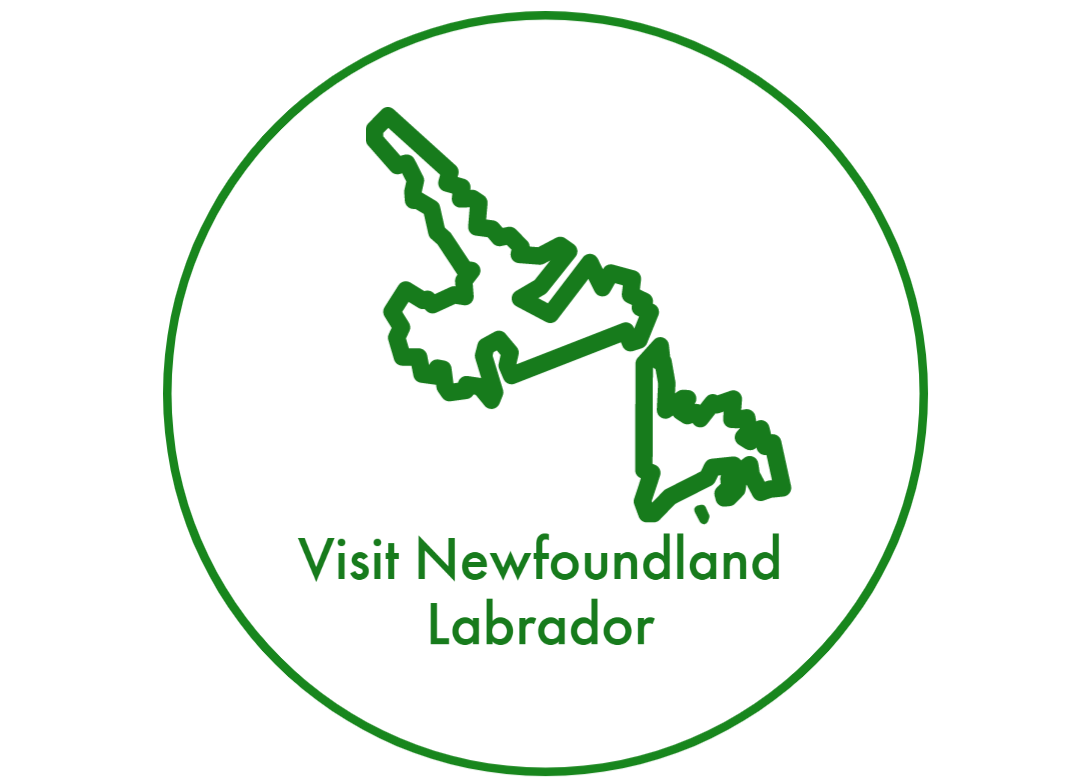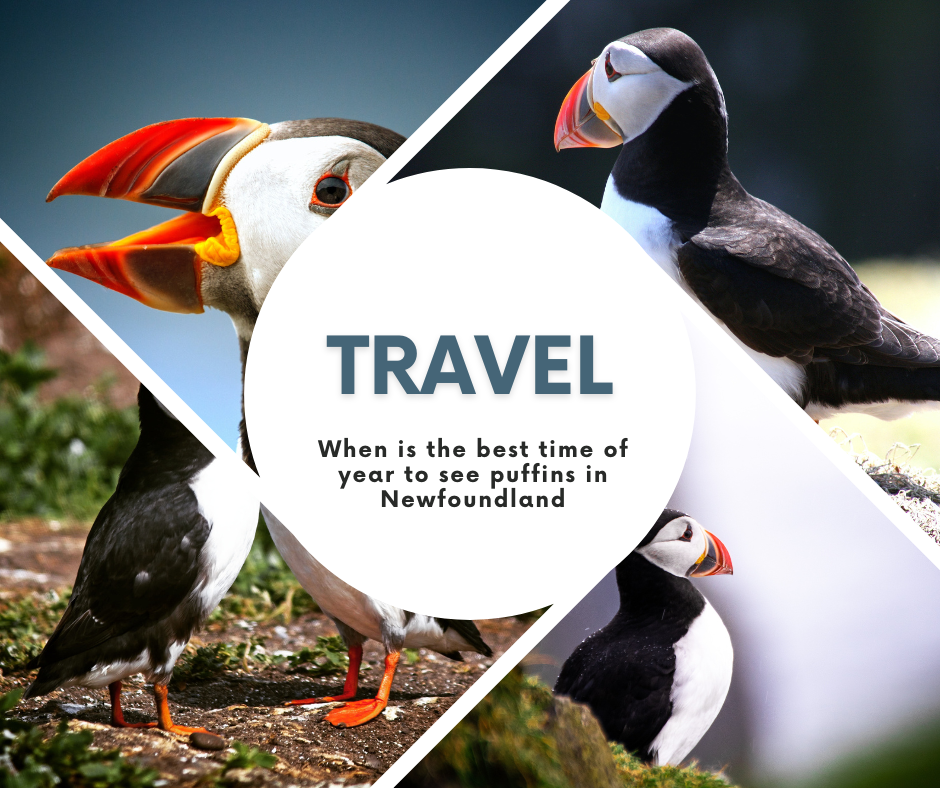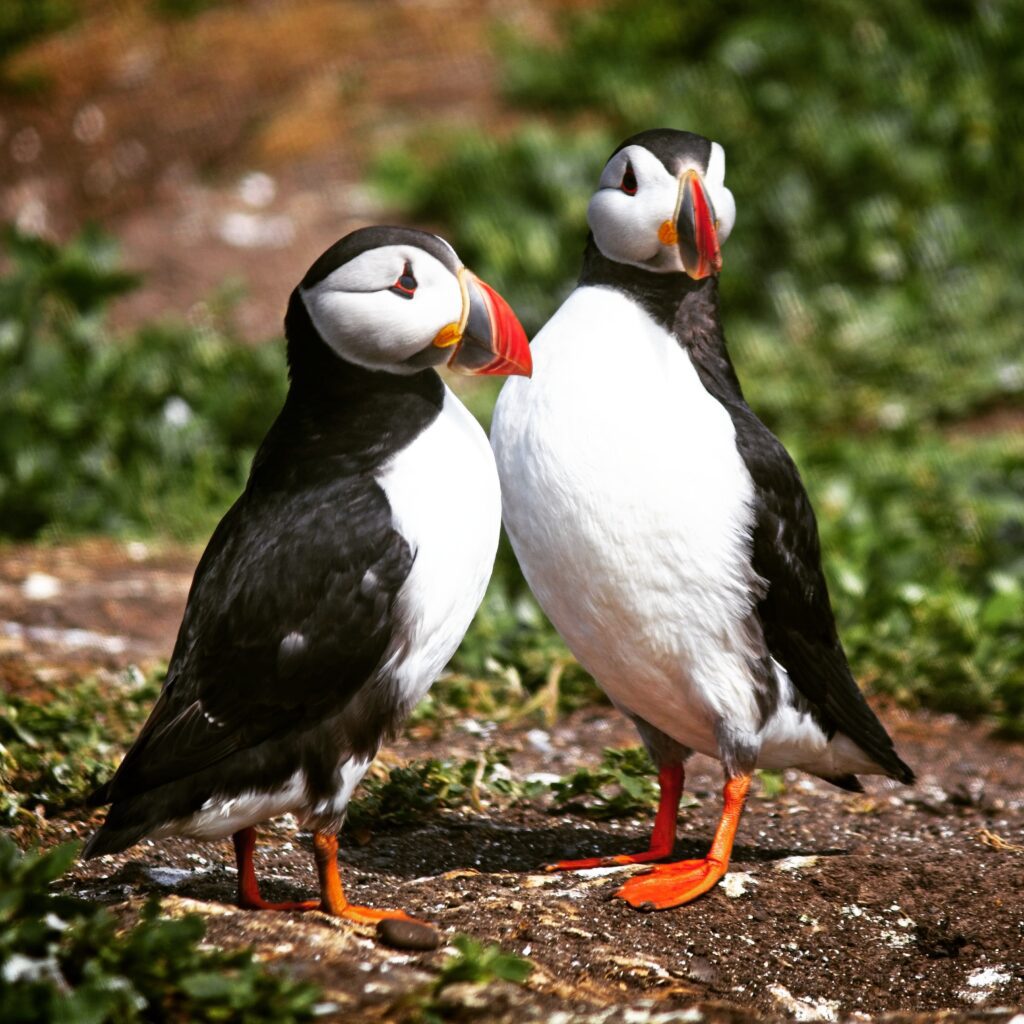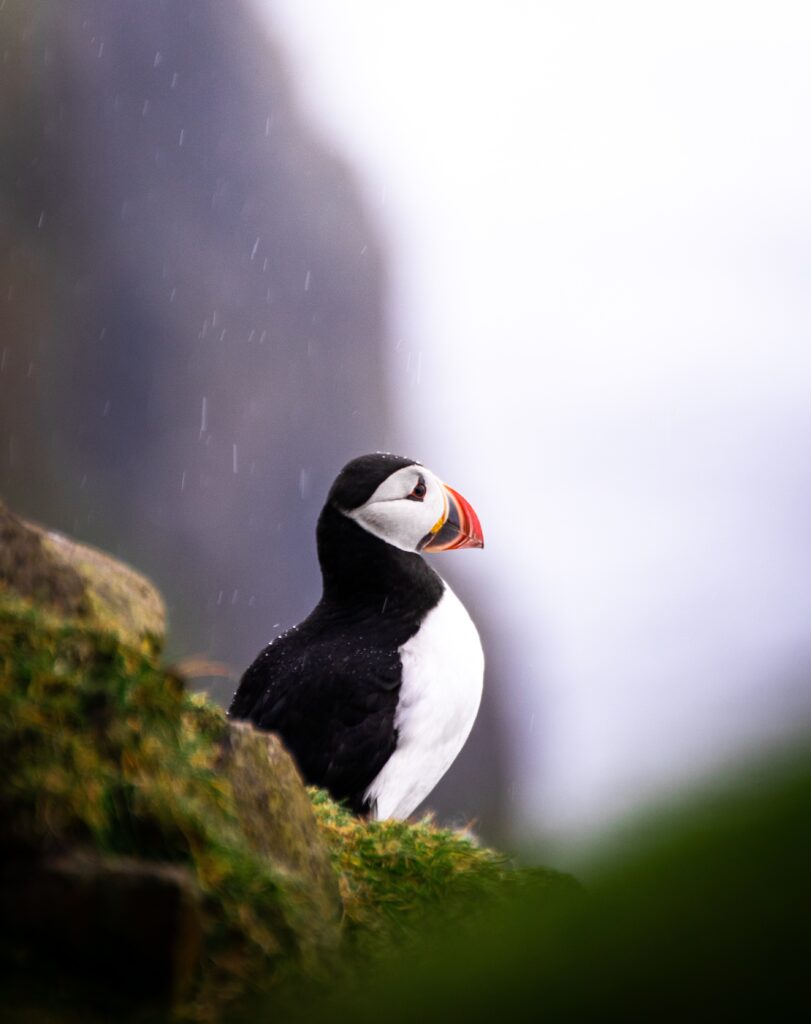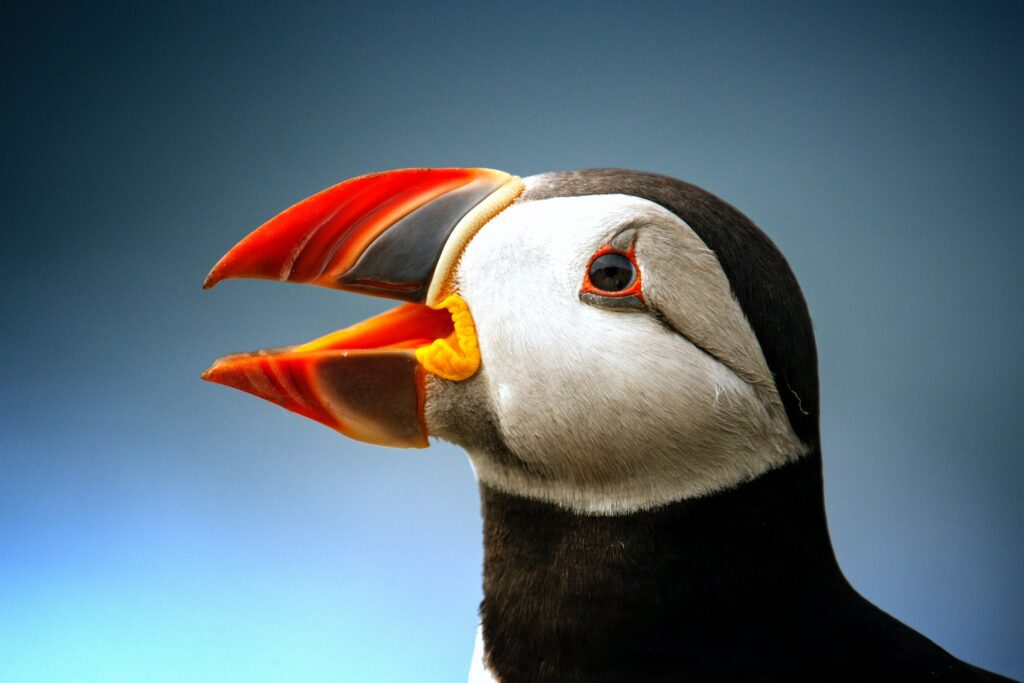When is the best time of year to see puffins in Newfoundland
The best time is in Summer, from June through August. One of the main questions we get often is: When is the best time of year to see puffins in Newfoundland? This is our answer, June through August. Atlantic Puffin is the provincial bird of Newfoundland and Labrador. Every season they flock to the shoreline to feed, breed and nest.
Puffins are the most colourful birds in Newfoundland and Labrador. They spent the summer nesting and feeding on the shore and coastal region of the island. During the winter, they migrated south and spent most of their time in the open water, feeding and swimming.
One of the largest colonies of puffin can be found in Witless Bay.
Every year like clockwork, hundreds of thousands of birds visit Witless Bay Ecological Reserve. As a result, this is one of the most prominent gathering places for puffins in North America.
Exploring Newfoundland, here is Everything You Need to Know About Traveling to Newfoundland and Labrador. Are you planning on spending time in St John’s? Here is Everything you need to know about St John’s and the Avalon Region
The reserve is located on a small island off the coast. To view puffin here, you must take one of the two boat tours in the area. They are Gatherall’s Puffin & Whale Watch and O’Brien’s Whale and Bird Tours. The boat tour will take you around the island, where you can watch the birds onboard. This is also a perfect opportunity to see whales and other marine animals.
You can see puffins in Elliston Bonnavista.
Elliston is one of the best places you will get the opportunity to get up close and personal with puffins. You can get so close you can touch them. However, we do not recommend touching these birds as they are wild animals. Access to the areas where the puffin’s nest is free.
These are two of the best place to see puffins in Newfoundland. Puffins are beautiful birds with black bodies, white chests, a yellow and orange beaks.
When and where can you see puffins in Newfoundland? Puffins can be seen in Newfoundland during their breeding season, which typically starts in late spring and extends into the summer months. They can be found in various locations along the coast of Newfoundland, mainly on offshore islands and cliffs where they nest. Popular areas for puffin sightings include Witless Bay Ecological Reserve, Cape St. Mary’s Ecological Reserve, and Elliston, among others.
When is the best time to see puffins in Elliston? Elliston is known for having a lot of Root Cellars and is also a fantastic place to see puffins in Newfoundland. The best time to see puffins in Elliston is mid-May to early August. During this period, puffins are most active, engaged in courtship, nesting, and rearing their chicks. You can visit the scenic cliffs of Elliston and observe these charming seabirds as they come and go from their nests, providing a wonderful opportunity for birdwatching and photography.
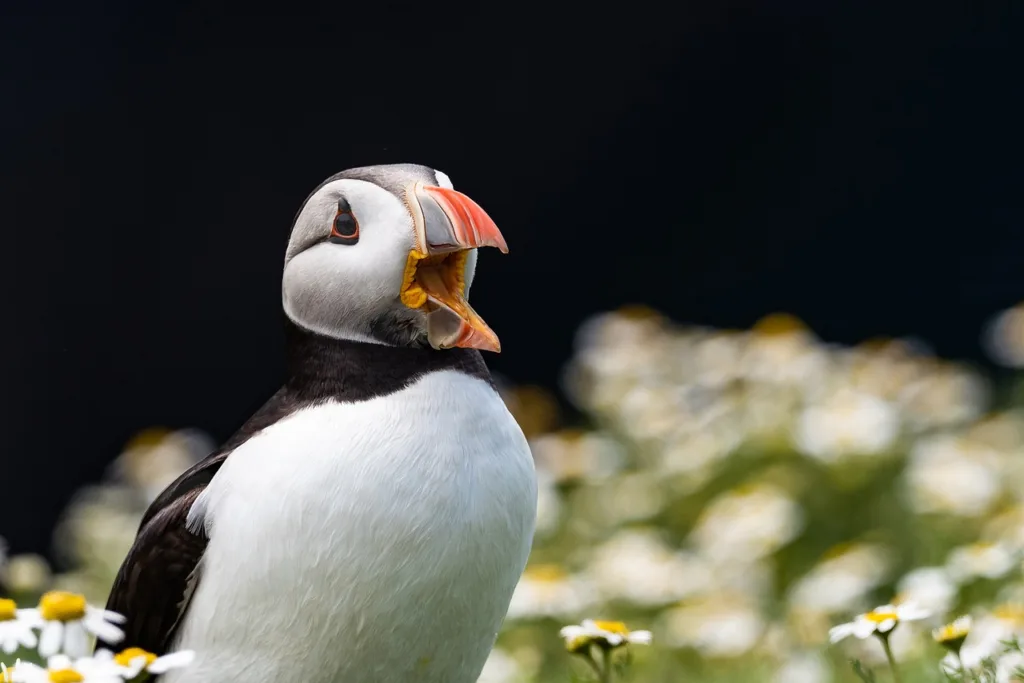
Where can I photograph puffins in Newfoundland? There are several locations in Newfoundland where you can capture stunning photographs of puffins. The Witless Bay Ecological Reserve, which comprises different islands off the coast, is one of the largest puffin colonies in North America and offers fantastic photography opportunities. Cape St. Mary’s Ecological Reserve is another excellent location known for its dramatic cliffs and abundant seabirds, including puffins. Elliston is also popular for photographing puffins on the Bonavista Peninsula, as they nest on the cliffs near the town.
What time are puffins most active? Puffins are most active during the breeding season, which typically spans from late spring to summer. They are diurnal birds, meaning they are active during the day rather than at night. Puffins are busiest in the early morning and late afternoon as they engage in foraging for food to feed themselves and their chicks. These are the optimal times to observe their behaviours, including their flights to and from the sea and their interactions at the nesting sites.
More Ways to Explore Newfoundland and Labrador
- What You Need to Know for Taking the Newfoundland Ferry Ride
- Taking the Ferry to Argentia Newfoundland
- Marine Atlantic Ferry From Nova Scotia To Newfoundland
- Best Places To Travel In 2024 For An Amazing Experience
- 15 Beautiful and Unique Things To Do In Newfoundland
- Out Of The Ordinary Things To Do In St. John’s
- Exploring The Unique and Beautiful Culture of Newfoundland
- Hiking On The Beautiful Brigus Lighthouse Trail
What is the best month to visit Newfoundland? The best month to visit Newfoundland depends on your interests and what you wish to experience. For puffin sightings and other seabird viewing, June, July, and early August are ideal, as this is the breeding season when the colonies are most active. If you want to witness icebergs, the best time is from late spring to early summer, particularly May and June. Whale watching is fantastic from June to September, when various whale species, including humpbacks, minke whales, and orcas, can be spotted off the coast.
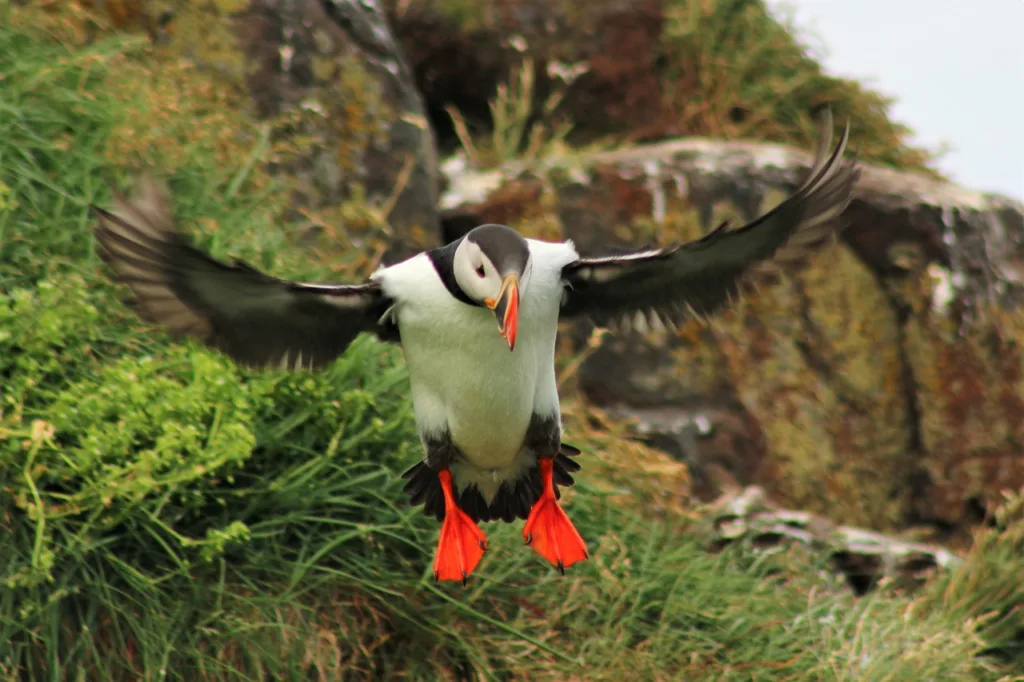
What time of day do puffins come out? Puffins are diurnal birds, meaning they are active during the day. They typically come out of their burrows and nests in the early morning, shortly after sunrise. This is when they begin their foraging trips to the sea for food. Puffins remain active throughout the day, but their activities may decrease slightly in the midday heat. In the late afternoon, they return to their nests, providing another opportunity to observe their flights and interactions as they settle in for the evening.
Can you still see puffins in September in Newfoundland? While the peak breeding season for puffins in Newfoundland is from late spring to early summer, it is still possible to see puffins in September. However, their numbers may decline as some individuals migrate to spend the winter at sea. If you plan to visit in September, it is advisable to check specific locations known for puffin sightings, such as the Witless Bay Ecological Reserve or Cape St. Mary’s Ecological Reserve, to determine the current presence of puffins. While sightings may be less frequent than earlier in the season, there is still a chance to observe and enjoy these charismatic seabirds before departing for their wintering grounds.
Where is the best place to find puffins in Newfoundland? Newfoundland offers several excellent locations to see puffins. The Witless Bay Ecological Reserve, located near St. John’s, is home to North America’s largest Atlantic puffin colony. The islands within the reserve, including Gull Island and Green Island, provide ideal nesting sites for puffins. Cape St. Mary’s Ecological Reserve, situated on the southern Avalon Peninsula, is another remarkable place to find puffins. The towering cliffs of Cape St. Mary’s host thousands of seabirds, including puffins, offering breathtaking views and ample opportunities for observation.
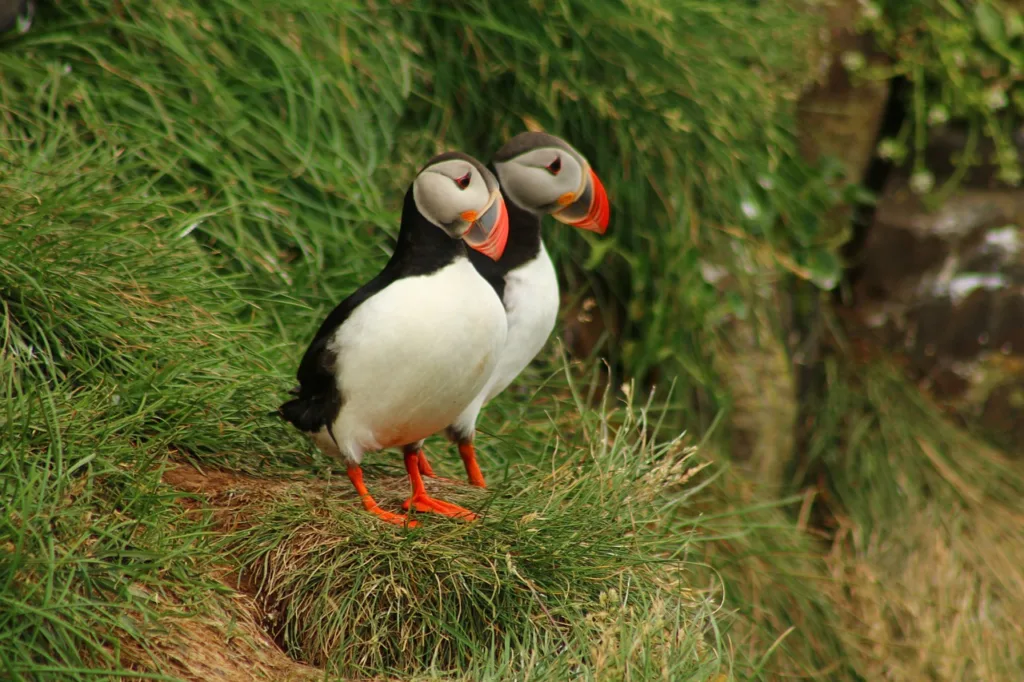
Can you see puffins in October in Newfoundland? By October, most puffins had already left their Newfoundland breeding grounds and embarked on winter migration to the open ocean. Therefore, the chances of seeing puffins in October are relatively low. While a few stragglers or non-breeding individuals may still be present, there are better times for puffin sightings. If your main objective is to see puffins, it is recommended to plan your visit between May and August when their populations are at their peak and most active.
Where do Newfoundland puffins go in the winter? During the winter, Newfoundland puffins disperse across the North Atlantic Ocean, spending their time far out at sea. They migrate to areas with suitable feeding grounds, often venturing into colder regions where they can find abundant fish. Newfoundland puffins can undertake extensive journeys, ranging from the waters off Greenland and Iceland to the Grand Banks of Newfoundland. These wintering areas provide ample food resources to sustain the puffins during the non-breeding season.
Can you see puffins in St. John’s, Newfoundland? While St. John’s is not a primary location for puffin sightings, it is a convenient starting point for excursions to nearby puffin colonies. The Witless Bay Ecological Reserve located a short distance from St. John’s, is home to significant puffin populations. Accessible by boat tours, the islands within the reserve, including Gull Island and Green Island, offer fantastic opportunities to see and photograph puffins up close. So, while you may not find puffins directly within St. John’s, you can easily visit nearby sites to witness these delightful seabirds.
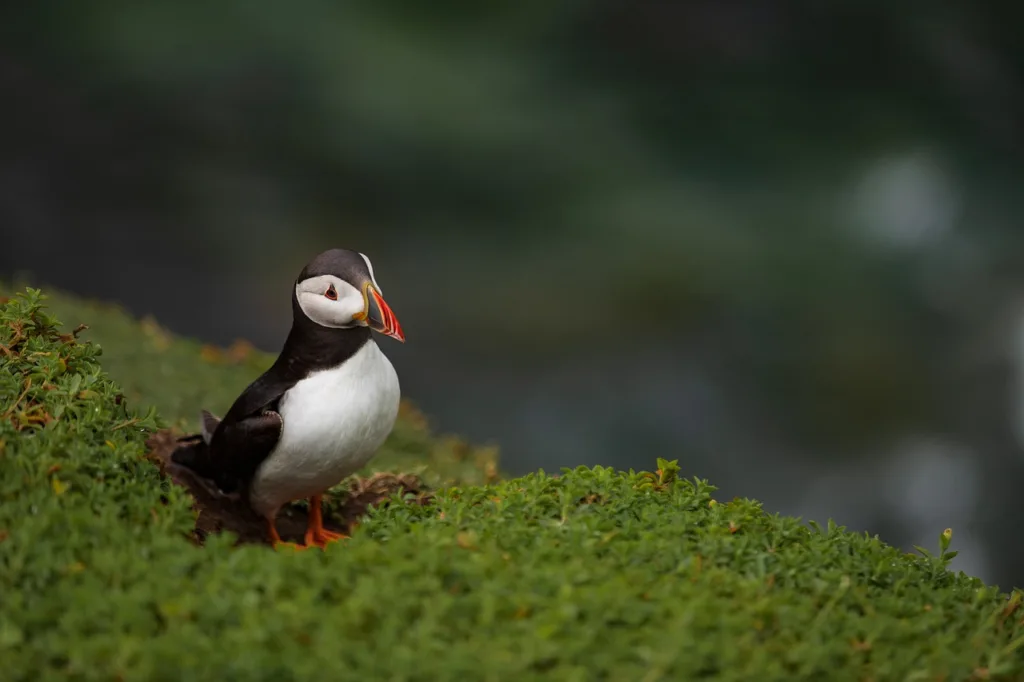
When can you see whales in St. John’s, Newfoundland? Whale sightings in St. John’s are most common from June to September, with peak activity occurring in July and August. During this time, various whale species can be observed in the waters off the coast, including humpback whales, minke whales, fin whales, and occasionally orcas (killer whales). Boat tours and excursions dedicated explicitly to whale watching are available from St. John’s, providing the opportunity to witness these majestic marine mammals in their natural habitat.
Where is the best place to see icebergs in Newfoundland? Newfoundland is renowned for its impressive icebergs, which can be seen along the province’s coasts. One of the best places to witness icebergs is along Iceberg Alley, a stretch of coastline extending from Labrador to the coast of Newfoundland. Twillingate, a picturesque town on the northeast coast, is often called the “Iceberg Capital of the World” and offers excellent vantage points for iceberg viewing. Other recommended locations include St. Anthony, Fogo Island, and Bonavista. The iceberg season typically runs from April to June, with peak activity occurring in late May and early June. During this time, massive ice formations, sculpted by nature, can be observed as they drift along the coast, creating a breathtaking spectacle.
Where to see Puffins in Newfoundland? To witness the charming puffins in Newfoundland, there are several prime locations to visit. One of the most notable is the Witless Bay Ecological Reserve, just a short drive from St. John’s. This reserve is home to the largest puffin colony in North America, with over 260,000 breeding pairs. Taking a boat tour from Bay Bulls, you can cruise around the islands within the reserve and see puffins nesting on the rocky cliffs. On the Avalon Peninsula, Cape St. Mary’s Ecological Reserve is another fantastic spot to observe puffins. Here, you can marvel at the panoramic views from viewing platforms as puffins and other seabirds gather on the cliffs.
Elliston Puffin Viewing Site, located in Elliston on the Bonavista Peninsula, is another renowned location for puffin sightings. As the name suggests, this site is a breeding ground for puffins, providing a unique opportunity to witness these delightful birds up close. Elliston is known for having a lot of Root Cellars and offers excellent vantage points along the rugged coastline to observe puffins in their natural habitat.
In addition to these specific locations, puffins can be found in other coastal areas of Newfoundland, such as the islands off the coast of Labrador, Funk Island, and Baccalieu Island.
Thank you for reading.
These are the best travel planning resources you should use.
Looking to book your trip to Newfoundland and Labrador? Use these resources that are tried and tested by other travellers like you who vacation in Newfoundland and Labrador. Bookmark these links. Save them for future reference.
Booking Flights, Hotels or B&B: Start planning your next vacation trip by finding the best flight, hotel or b&b deals. Book Here
Finding things to do in Newfoundland and Labrador on TripAdvisor and Viator is not hard. You can enjoy boat tours, whale watching, iceberg watching, kayaking and other activities. Book all these activities on
You can also find low prices on hotels, B&B and cabins with these two providers. If you are located in Canada, the USA, the UK or Europe, use Booking.com, and if you are in Canada, the USA or anywhere else, use TripAdvisor.
Car Rental: Here is what we recommend:
When you book with Rentalcars.com, you can compare prices and find the best vehicle for your trip. Economybookings.com Display all their vehicle on the website with a detailed description. They display high-quality photos and a user rating as well. Qeeq.com serves road trip travellers like you from different countries by working with car rental companies worldwide.
Get compensated if your flight is delayed or cancelled.
AirHelp and Compensateair will help you with flight delays, cancellations, or denied boarding. All you need to do is to submit your flight details, and they will handle the claim process on your behalf. They will handle all the paperwork, airline negotiations, and legal proceedings.
Do you need more help planning your trip?
Check out our Resources Page, where we also highlight all the resources and companies you can use to assist with your planning.
